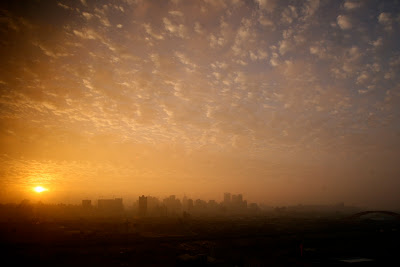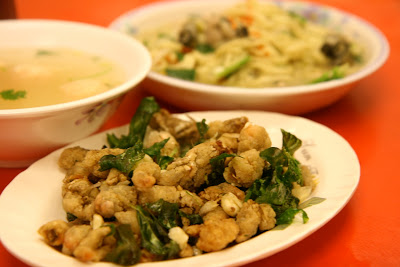The two days were spent exploring the area around Taichung. We spent Day 11 taking the train from Taichung to Jiji, a place known for its bike paths. However, as we had missed the morning train, we ended up going for lunch at a place recommended by the Lonely planet guidebook, at Shantung Dumplings & Beef Noodles (Shanddong Jiaoziguan Niurou Mianguan, 96 Gongyi Road). The beef noodles were really good, and they also had beef rolls (Niurou juanbing) which were oh so yummy!
Then we headed back to catch our train...
Tickets and a train schedule, and off we go to Jiji!
Visitors to Jiji usually spend the afternoon renting a bike to explore the area, but we opted to go on foot instead. Some points of interest included:
Trains, trains and more trains everywhere:
Banana egg rolls: These look just like love letters that you eat during Chinese New Year, but are extremely fragrant and yummy thanks to the banana they add to the mix. They can be purchased in a little shop outside the train station.
Wu Chang Temple (Wuchang Gong): The 921 earthquake destroyed many buildings in the area (including the train station), and this temple wasn't spared. However, the temple was left in a state of disrepair, which makes for good photographs if you are looking to snap some "ruins".
Finally, we ended the day by taking the train back to Taichung, and headed for the Chunghsiao night market (Zhongxiao Yeshi) for dinner. The place has the best oyster mee sua we've tried so far, and there's also a dessert shop (near the start of the night market) selling large tang yuan (glutinous rice balls) with a smorgasbord of other sweet things floating inside the soup.
Sunset at Jiji train station
Day 12 was spent exploring the little town called "Deer Harbour" (Lugang), which has its own quaint characteristics:
Food: Apart from having the best oyster omelette we've tasted for our entire trip, this place also has some unique munchies with cute names like "shrimp monkeys", which were really good... Try out these goodies at the eateries near the Matsu temple.
Temples: 2 temples stand out amongst the whole plethora of temples here, namely, the Matsu temple (Tianhou Gong), and the Longshan temple (Longshan Si). The Matsu temple has a Matsu statue said to have been brought there by a Qing Dynasty general, but we had difficulty locating it due to the hundreds of statues within the temple complex. Longshan temple, on the other hand, is considered the best preserved Qing Dynasty temple in the whole of Taiwan, but had the most modern toilets, complete with automatic taps!
A pair of dragons guard the doors to the front court, but unlike the usual symmetry seen in such temples, one points up to the sky, while the other points downwards to the earth.
Artisan culture: This town holds quite a few artists which specialize in various traditional arts (some which are dying out, it seems). We visited a paper fan maker (Mr Chen's Fan Shop), and accidentally woke the man up (he was snoozing in one corner of his shop). We also paid a trip to Wu Tun Hou Lantern Shop, where Mr Wu himself sat enthroned in his shop surrounded by his creations while his apprentice did the painting...
Other architectural oddities in Lugang included:
A half-sided well (Bantian Jin), which was the result of a rich family building a well inside their complex. Half of the well protruded outside the complex and the poor were given access to that half! The well is located at the Old Market Street (Gushi Jie), which is worth a stroll through as well.
As well as a lane built with many twists and turns to keep out the blustering wind (and bandits!), aptly known as the Nine Turns Lane (Jiuqu Xiang). We took refuge there to hide from the strong winds that were blowing that day!




















No comments:
Post a Comment